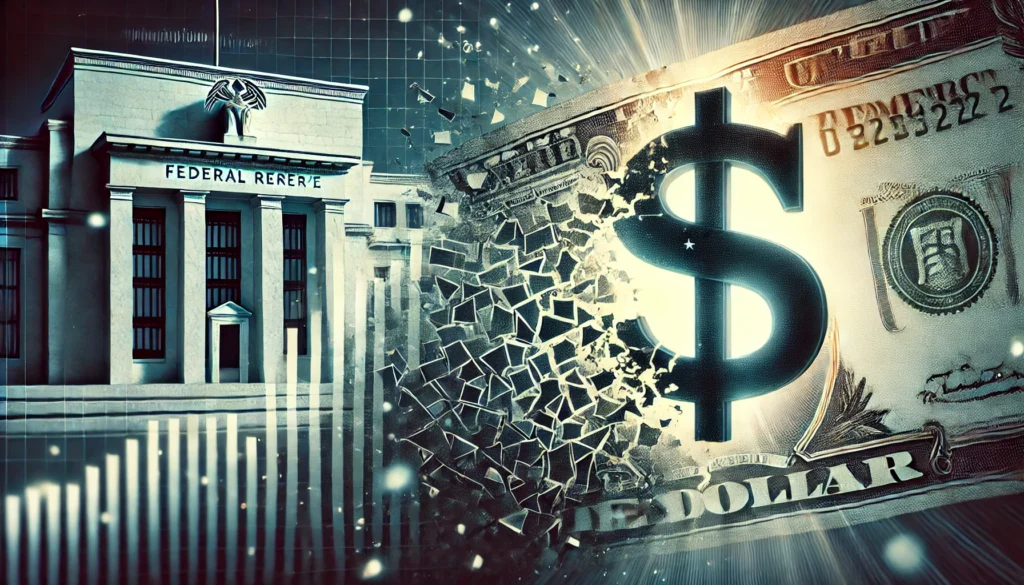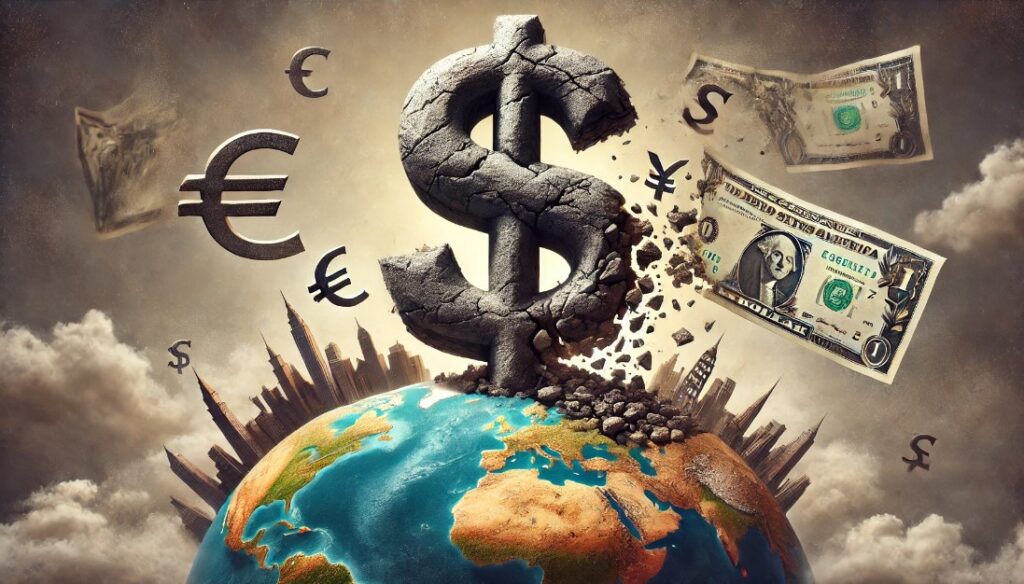Why the American Dream Feels Out of Reach
It feels like most of us are stuck in the same spot: living paycheck to paycheck. This isn’t just a recent problem—it’s been going on for decades. Think about it: when I was growing up, my father worked a blue-collar job, and my mother didn’t need to work because she had five kids to raise. We had a house, a car, and while money was tight, we got by. Today, that seems like a distant dream for many families. What changed? Sure, we can point to bad spending habits, but there’s a bigger picture here.
Imagine the same financial struggles families face but on a national scale.
The U.S. National Debt: $31.8 Trillion and Counting
Right now, the U.S. government owes more than $31.8 trillion. That’s around $96,000 for every American citizen and over $210,000 for every taxpayer. This isn’t just a number—it’s like the government took out a giant mortgage that we’ll never live to see paid off. This debt is the result of years of borrowing to fund government spending that goes beyond its income.
The Treasury takes out loans in the form of Treasury bonds, which are sold to everyone from Australia to Vietnam. But this borrowing has gone on for so long that it has become the norm. What does this mean for us and our future?
The Real Cost of Government Debt: More Than You Think
The national debt is just one piece of the puzzle. The U.S. also has massive “indirect liabilities”—potential obligations that could become real debts. Think back to the Great Financial Crisis, when the government bailed out mortgage companies. Those bailouts were backed by us, the taxpayers. Right now, the U.S. is on the hook for around $4 trillion in mortgages, and that’s just one example. Add in state and local debt, and you’re looking at $3.3 trillion more.
Some estimates suggest the total indirect liabilities could be as high as $200 trillion. How did we get to this point, and what does it mean for the future?
From World War II to Today: How the U.S. Debt Got So Big
At the end of World War II, the U.S. national debt was 106% of the entire economy. Back then, every dollar was backed by gold, which limited how much the government could print. Fast forward to the 1960s, and government spending on foreign aid, social programs, and military efforts created a surplus of dollars. This overprinting led to a run on the U.S. gold reserve. By 1971, the U.S. had lost most of its gold, and President Nixon ended the dollar’s link to it.
Since then, the U.S. has printed dollars with no backing, and the national debt has grown every year since 2002.
The Borrow-Print-Spend Cycle: How It Hurts Us All
The U.S. government funds itself by borrowing money, printing dollars, and spending more than it collects in taxes. The Federal Reserve, which controls the money supply, can create new dollars out of thin air to buy government debt. This process, called “monetizing the debt,” distorts the economy.
What’s the result? More dollars in circulation, lower interest rates for the government, and higher prices for the rest of us. This cycle keeps going because the Fed has an unlimited budget and appetite for government debt. But what happens when we reach a breaking point?
The Debt Ceiling: America’s Credit Limit (And Why It’s a Big Deal)
The debt ceiling is like the government’s credit limit—it’s the legal cap on how much debt the government can take on. Congress has raised the debt ceiling over 90 times in the 20th century and 19 times since 2000. Each time it gets raised, the government borrows more, without a clear plan for paying it back.
Raising the debt ceiling is a short-term fix, but it doesn’t solve the long-term problem. If the ceiling isn’t raised fast enough, the U.S. could face economic damage on a scale comparable to the global financial crisis of 2008.
What Happens When Nations Can’t Pay Their Debts?
When individuals or companies can’t pay their debts, they can declare bankruptcy. But nations don’t have that option. Instead, they face two choices: austerity or default. Austerity means cutting spending and raising taxes, which is never popular. Default means refusing to pay back debts, which would send shockwaves through the global economy.
Some nations, like Argentina, have chosen default. Once one of the world’s wealthiest countries, Argentina has seen its economy crumble after multiple defaults and reckless money-printing. Could the U.S. face the same fate?
Hyperinflation and the End of the Dollar’s Value
If the U.S. keeps printing money to pay off its debts, we could face hyperinflation. Since the U.S. left the gold standard in 1971, the dollar has already lost 86% of its purchasing power. As more dollars are printed, the value of each one decreases. This could lead to skyrocketing prices for everything, from groceries to gas, and make it harder for Americans to afford basic needs.
The Solution: Protect Your Wealth Before It’s Too Late
The U.S. debt problem isn’t going away, and neither is inflation. So what can you do to protect your financial future? It’s time to take control of your finances. That means living within your means, reducing or eliminating debt, and diversifying your savings.
Many experts recommend looking into physical assets like gold and silver, which hold their value over time. Unlike the dollar, gold and silver can’t be printed or manipulated, making them a safe haven in times of economic uncertainty.
Take Action Now: Don’t Let Debt Control Your Future
It’s time to stop waiting for the government to fix the debt problem and take matters into your own hands. Start by managing your finances, cutting down on debt, and investing in assets that protect your wealth. The U.S. economy is in a debt trap, but you don’t have to be.
By taking action now, you can safeguard your financial future and protect your family from the long-term effects of the national debt. Don’t wait until it’s too late—start planning today.



